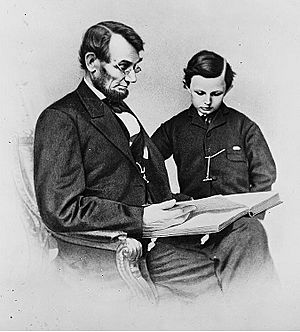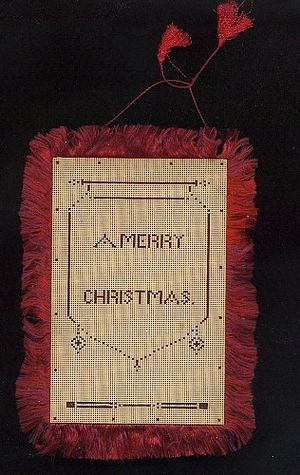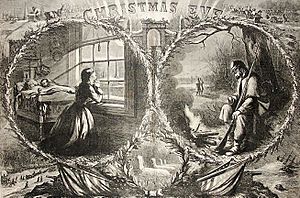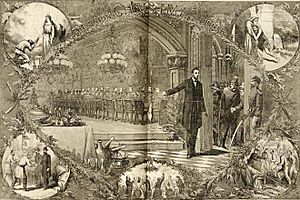Christmas in the American Civil War facts for kids
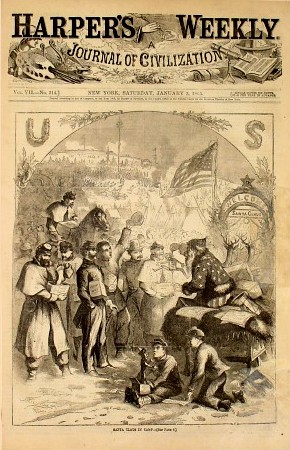
During the American Civil War (1861–1865), Christmas was a very different holiday. In the Confederate States of America (the South), people celebrated it. However, in places like Massachusetts, it was sometimes seen as too expensive and even fined! Some religious groups, like the Puritans, thought it should be a day for fasting.
Christmas wasn't an official holiday in the United States until five years after the war ended. Even on Christmas Day, battles and small fights continued across the country. Celebrations for both soldiers and families changed a lot. Artists like Thomas Nast used Christmas in their drawings to share their ideas about the war. In 1870, President Ulysses S. Grant made Christmas an official national holiday. He hoped this would help bring the North and South back together.
Contents
How the War Affected Christmas
Christmas for Leaders and Soldiers
On the first Christmas of the war in 1861, President Abraham Lincoln hosted a party. Earlier that day, he worked hard to make sure the capture of two Confederate representatives, John Slidell and James Murray Mason, was seen as legal.
In 1862, the Lincolns visited injured soldiers in hospitals. In 1863, many Union soldiers received gifts "From Tad Lincoln". Tad, Lincoln's son, was very touched by the soldiers' struggles. These gifts were mostly books and clothes. The most famous Christmas gift Lincoln received was on December 22, 1864. General William Tecumseh Sherman announced he had captured Savannah, Georgia.
Battles and Skirmishes on Christmas Day
Military actions also happened on December 25th. In 1861, the Union navy caught a ship trying to sneak past their blockade. There were also two small fights in Virginia and Maryland.
In 1862, several small battles took place. Confederate general John Hunt Morgan led his famous Morgan's Christmas Raid in Kentucky. On that day, Morgan's men destroyed about 35 miles of railroad tracks.
In 1863, Union forces destroyed Confederate salt factories in North Carolina. Salt was very important for preserving food during the war. In South Carolina, there were also small fights between the Union navy and Confederate cannons. In 1864, Confederates bravely fought off a large attack by sixty warships on Fort Fisher. Several other small battles were fought in the western parts of the war.
Celebrating Christmas During Wartime
Soldiers' Celebrations
Soldiers who weren't fighting found ways to celebrate Christmas. Some Union soldiers decorated small Christmas trees with salt pork and hardtack (a type of hard biscuit). Other soldiers got special meals. One captain from Massachusetts gave his men turkey, oysters, pies, and apples. However, many soldiers did not get any special treats.
In one story from December 25, 1864, 90 Union soldiers from Michigan gave "food and supplies" to poor families in Georgia. They even decorated their mules to look like reindeer by tying tree branches to their heads! In some army units, celebrating Christmas was not allowed. In 1862, soldiers were punished for shooting their guns in celebration, even though they were actually firing a funeral salute.
Music and Cards
People sang carols, hymns, and seasonal songs during the war. Some songs, like "Deck the Halls", "O Come, All Ye Faithful", and "Hark! The Herald Angels Sing", are still sung today. American songs from that time include "It Came Upon the Midnight Clear" (1850), "Jingle Bells" (1857), "We Three Kings" (1857), and "Up on the Housetop" (1860).
Christmas cards were popular in Europe but were not common in the United States until the 1870s.
The poet Henry Wadsworth Longfellow wrote his poem, "Christmas Bells," on Christmas Day 1864. He had just heard that his son, Charles, was badly hurt in battle. This poem was later set to music and became the carol "I Heard the Bells on Christmas Day". The carol version leaves out parts of the poem that talked about the war.
Christmas for Children
Christmas was different for children during the war. There were fewer presents, especially in the South, which was greatly affected by the fighting. Author Kevin Rawlings wrote that some southern children worried about the Union blockade. One little girl even tried to figure out how Santa Claus could avoid it!
Sometimes, fathers on both sides were allowed to go home for a short time. Children were said to react to their fathers as if they were "near strangers." Some parents even told their children that Santa couldn't come because "Yankees had shot him."
Thomas Nast's Christmas Cartoons
Thomas Nast was a famous artist who drew cartoons for newspapers. He used his drawings to support the Union side. Many of his illustrations showed how Christmas was affected by the war.
One of his cartoons from Christmas Eve 1862 showed a wife praying at a window in one circle. In another circle, her husband was shown praying on the battlefield. The cover of the same magazine showed Santa Claus giving gifts like socks to Union soldiers. Santa was also holding a puppet of Confederate President Jefferson Davis with a rope around its neck. This was a strong message against the Confederacy. The Christmas 1863 issue showed the husband and wife reunited.
Nast's Christmas cartoon for 1864 was more about peace. It showed Lincoln inviting Confederate soldiers into a warm, happy hall. Lincoln himself said that Nast's Santa Claus drawings were "the best recruiting sergeant the North ever had." This meant they helped encourage people to join the Union army.
Nast wasn't the only one to use Christmas to spread ideas. The New York Herald newspaper showed Santa Claus upset that he couldn't reach southern children because of the northern blockade. On the Confederate side, The Richmond Examiner newspaper described Santa as a "Dutch toy monger" from New York. They said he had nothing to do with traditional Christmas celebrations in Virginia.
Even after the war ended, Nast continued to use Christmas themes. In a Christmas 1865 drawing, he showed the heads of several Confederate generals at Ulysses S. Grant's feet, with Santa in the center. Later, Nast purposely made the North Pole Santa's home. He did this so no one else could use Santa for nationalistic messages like he had during the war.


